OurCarbon Turns Waste Material Into a Multi-use Substance
By: Kelsey Swanson and Ben Adams
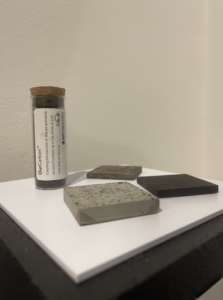
Have you ever wondered what happens to your poop after you flush it down the toilet? Well, it doesn’t just disappear. It usually ends up in a wastewater treatment plant, where it’s broken down by decomposers like bacteria. This process releases methane, a greenhouse gas over 20 times more potent than carbon dioxide. When these greenhouse gasses enter the atmosphere, they trap the sun’s rays, causing the planet to warm up. This affects every living thing on Earth from arctic polar bears to coral in the Great Barrier Reef to desert cacti.
In fact, wastewater and landfills account for over ten percent of global methane emissions. Over 100 million tons of organic waste are sent to landfill each year in the U.S. alone–that’s the weight of 22 million Asian elephants! BioTechForce, a startup that creates sustainable materials, is changing this. Their main product, , is created by taking organic waste and upcycling it, creating a versatile carbon-sequestering base material. They want your poop in their products – not emitting methane!
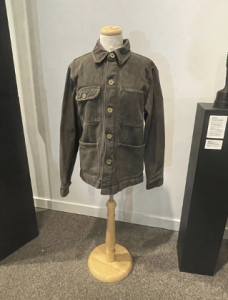
To produce OurCarbon, waste destined for landfill is diverted to OurCarbon’s processing facility in California. There, it undergoes pyrolysis, which involves heating the waste to extremely high temperatures (1100ºF!) without oxygen. This causes new, strong bonds to form that last for thousands of years, locking in the carbon and preventing it from being emitted into the atmosphere. The resulting material is OurCarbon, which has many uses from dyes and pigments to 3-D printing.
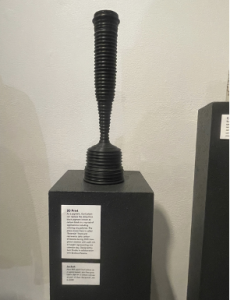
Currently, the California facility can produce one ton of OurCarbon daily, preventing ten tons of carbon dioxide emissions from entering the air we breathe. That’s the equivalent of taking two cars off the road per year every day! They are also building new plants to produce OurCarbon elsewhere. BioForceTech is making a push for a circular economy, which involves reusing, rather than discarding, as much waste as possible. They have already formed partnerships with companies across multiple industries, including clothing, construction, and agriculture. OurCarbon is currently being used in many applications, due to its versatile nature as a basic carbon source. These include being used in pigments and dyes, as a base material for construction, and as a soil additive for plant nutrient enrichment. Two separate companies, VirusInk and Green Matters Natural Dye Company, are using OurCarbon to create black pigments and dyes for clothing. The former has turned the OurCarbon biofuel pellets into “RethINK Black,” a screen printing ink used to make decals on clothing. Another clothing company, Alex Mill, has started implementing OurCarbon into its product line as a sustainable clothing dye.
OurCarbon can also replace the Carbon Black pigment commonly used in things like 3D-printing filaments and paint. Carbon Black pigment is made by burning fossil fuels and collecting the carbon ash dust. By replacing Carbon Black, carbon dioxide output into the atmosphere is further reduced, taking almost another car off the road every day.
OurCarbon is also used as a structural additive for concrete products. Cement is the second-most demanded resource by mankind (behind water), which creates seven to eight percent of carbon emissions annually. When using OurCarbon as a replacement for sand, it neutralizes the carbon footprint of the resulting concrete creation. A winery in Oregon has collaborated with LaFarge North America, a cement-making company, and a local concrete layer, Vesuvius Forge Concrete Surfaces Co., to create a carbon-neutral floor for their new facility. This Drabkin-Mead concrete formulation is now open-source, so it can be used by anyone.
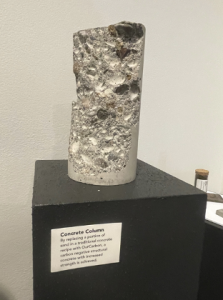
Furthermore, manure and mass-produced fertilizers are commonly used in today’s agribusiness economy to help grow enormous amounts of healthy crops. A company called DEN Soils is using OurCarbon as a soil additive to supplement plant carbon intake instead of resorting to manure, which massively contaminates the atmosphere with methane gas, which is even more harmful than carbon dioxide! OurCarbon is also useful for retaining water in the soil for plant roots to easily access, increasing the soil’s nitrogen and phosphorus concentrations.
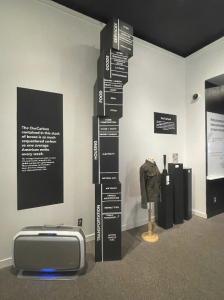
Imagine a future where Michigan State University has OurCarbon readily accessible. A collection and pyrolysis facility can be built and based right off of the wastewater treatment facility on the southwest side of campus. This organic material can then be used for many purposes, which have already been implemented in other locations: in the Apparel and Textiles program as a dye, or the Packaging Engineering Program as a pigment; in the roads we drive on, or the parking structures we leave our cars in; in the crop fields on Hagadorn Road, and studies in the Biosystems and Agricultural Engineering Programs. Since there are so many applications of OurCarbon, we’re sure there will be many more uses for this highly versatile substance to be applied here on campus, but also worldwide.
About the Authors

Kelsey Swanson
Kelsey Swanson is a sixth-year senior at Michigan State University, studying biomedical laboratory diagnostics and neuroscience, with intentions to pursue a career in medical clinical research studying neurogenetics and pediatric brain cancers. In her free time, you will find her watching Liverpool FC (You’ll Never Walk Alone) and the Detroit sports teams, or walking the beaches of Northern Michigan with her labradoodle, Anfield, hunting for the elusive Petoskey Stone.
 Ben Adams
Ben Adams
Ben Adams is a third-year student at Michigan State University from Arlington, Virginia. He is studying biosystems engineering with a minor in environmental studies and sustainability. He plays the tuba in the Spartan Marching Band and the Spartan Brass, and you can find him with the band at many MSU sporting events. He also enjoys training for triathlons and running races, and is in the MSU triathlon club.